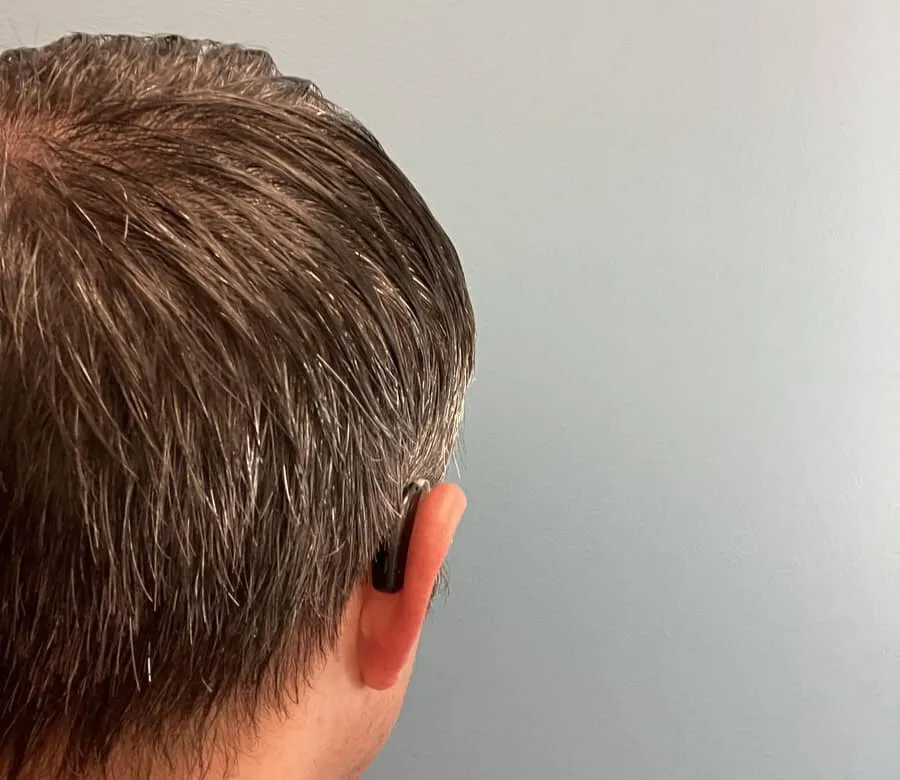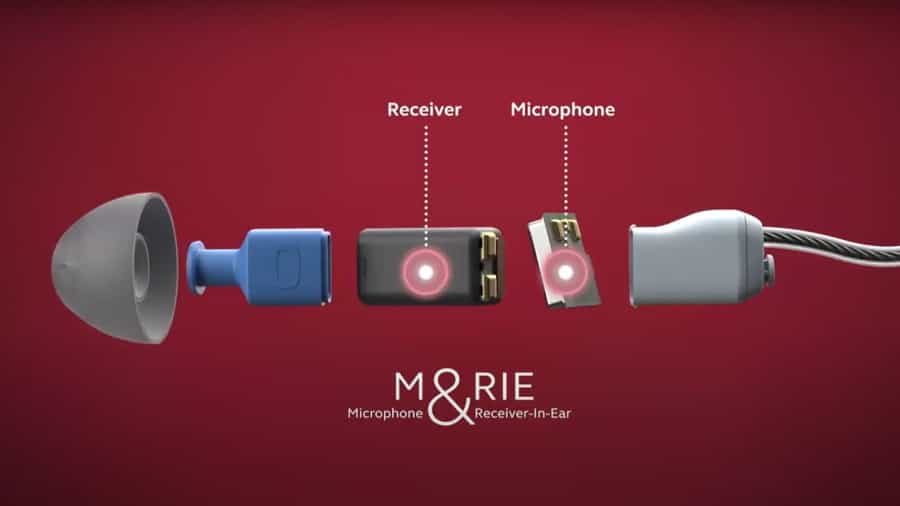As an expert audiologist with 12 years of experience, it is important to address the various challenges individuals face when using hearing aids. One such issue arises when men with short hair experience irritating sounds caused by their hair rubbing against the microphones of receiver-in-canal (RIC) style hearing aids. This problem occurs when the length of the hair is such that it brushes against the microphones during head movements, resulting in unwanted noise and distortion. In this article, we will explore possible solutions to mitigate this annoyance and highlight two innovative hearing aids that offer effective resolutions.
Understanding the Hair-Microphone Interaction
When men with short hair wear RIC hearing aids, the proximity of their hair to the microphones becomes a contributing factor to unwanted noise. The friction generated by the hair’s contact with the microphones causes a rubbing sound that can interfere with the wearer’s ability to perceive and understand sounds clearly. Sometimes it also sounds like a clicking or tapping noise.
Solutions for Mitigating Hair Noise
| Solution | Description | Advantages | Considerations |
|---|---|---|---|
| Hair Length Adjustment | Adjusting the hair length to minimize contact with the microphones | Inexpensive, easy to implement | May require frequent hair maintenance |
| Oticon Real Hearing Aids with Handling Noise Reduction | Utilizing Oticon Real hearing aids with handling noise reduction technology | Reduces handling noise, including hair noise | Buying new pair of hearing aid can be expensive |
| Resound Omnia Hearing Aids with M&RIE Receivers | Using Resound Omnia hearing aids with M&RIE receivers placing the microphone in the ear canal | Hair cannot affect the microphone, improved sound localization | Suitability depends on hearing loss type, potential feedback issues, cost of buying new hearing aids |
| Alternative Style Hearing Aids (ITE/CIC) | Considering ITE or CIC hearing aids that are less prone to hair contact | Hair cannot touch the microphones | Custom earmold impressions require required, may not be suitable for all types of hearing loss, occlusion |
1. Hair Length Adjustment
One potential solution to alleviate the irritating noise caused by hair rubbing against RIC hearing aid microphones is to adjust the hair length. By keeping the hair shorter, individuals can minimize the contact between the hair and the microphones, reducing the occurrence of unwanted noise. On the other hand, letting the hair grow longer might also provide relief, as longer hair is less likely to come into contact with microphones during head movements. This can be done with your current hearing aids but may require frequent haircuts or endurance to wait for your hair to grow out. Not ideal answers for most individuals.
2. Oticon Real Hearing Aids with Handling Noise Reduction
A remarkable solution to combat the annoyance caused by hair rubbing against RIC hearing aid microphones is the utilization of Oticon Real hearing aids with handling noise reduction technology. This cutting-edge feature is designed to tackle not only wind noise but also the specific issue of handling noise, which includes the noise produced by hair contact.
I think of handling noise as contact noise. So whether it be from touching the hearing aid with your hand or your glasses tapping the side of the hearing aid or your hair rubbing on the hearing aid microphones. These are all defined as handling noise (at least to the Danish engineers who named the feature).
To understand how handling noise reduction works, let’s consider an analogy. Imagine you are holding a microphone in your hand and moving it around. As you move it, you may notice that the sound captured by the microphone becomes distorted or disrupted due to the handling noise generated by your hand’s movements. Similarly, when hair rubs against the microphones of RIC hearing aids, it creates friction that produces unwanted noise, resulting in a compromised listening experience.

The handling noise reduction technology in the Oticon Real hearing aids employs advanced algorithms and signal processing techniques to detect and minimize the impact of handling noise, including the noise caused by hair rubbing against the microphones. This technology intelligently distinguishes between desired sounds, such as speech or music, and unwanted noise, effectively reducing the latter.
By suppressing handling noise, including hair noise, the Oticon Real hearing aids ensure that wearers can enjoy the more transparent and more natural sound without the interference caused by friction between hair and microphones. This advancement significantly enhances the overall sound quality and minimizes the annoyance associated with hair contact.
For individuals who value both functionality and aesthetics, the Oticon Real hearing aids offer an optimal solution. They not only address the hair noise issue but also provide a sleek and discreet design, ensuring a comfortable fit and effortless wearing experience. With the handling noise reduction feature, wearers can experience improved hearing performance even in challenging listening environments, allowing them to actively engage in conversations and enjoy various activities without distractions.
It is important to note that while the Oticon Real hearing aids are particularly effective in reducing hair noise, individual experiences may vary. Consulting with an audiologist will help determine if these hearing aids are suitable for specific hearing needs and preferences.
Remember, with the right technology and expert guidance, individuals can overcome the annoyance caused by hair rubbing against RIC hearing aid microphones and regain a more enjoyable and immersive hearing experience.
3. Resound Omnia Hearing Aids with M&RIE Receivers
Another innovative solution to mitigate the annoyance caused by hair rubbing against RIC hearing aid microphones is found in the Resound Omnia hearing aids, which utilize Microphone & Receiver-in-Ear (M&RIE) receivers. This design concept presents a unique approach to address the hair noise issue by placing the microphone directly in the ear canal, effectively eliminating the possibility of hair interfering with the microphones. The M&RIE receivers consist of a tiny microphone located in the ear canal, closer to the eardrum, while the receiver is placed behind the ear. This arrangement allows for more accurate sound capture, as the microphone is positioned at the optimal location to capture sound as it naturally enters the ear.

It is important to note that the suitability of M&RIE receivers for an individual’s hearing loss should be determined by an audiologist. While this design offers benefits such as hair noise reduction, it may not be the ideal choice for everyone. Factors such as the type and severity of hearing loss, ear anatomy, and personal preferences need to be taken into account when selecting the most appropriate hearing aid solution. Additionally, feedback issues need to be considered when utilizing M&RIE receivers. An experienced audiologist will ensure proper programming and fitting to address feedback issues and optimize the hearing aid performance.
4. Alternative Style Hearing Aids: ITE and CIC

An additional solution to address the annoyance caused by hair rubbing against hearing aid microphones is to consider alternative styles of hearing aids (can be from any manufacturer) that are less prone to hair contact, such as In-The-Ear (ITE) and Completely-In-Canal (CIC) hearing aids.
ITE hearing aids are custom-made to fit the individual’s ear and are larger in size compared to RIC or BTE (Behind-The-Ear) hearing aids. With the entire device placed inside the ear, ITE hearing aids eliminate the concern of hair touching the microphones, providing a direct solution to the hair noise issue.
CIC hearing aids, on the other hand, are the smallest and most discreet hearing aids available. These devices are custom-made to fit entirely inside the ear canal, making them virtually invisible to others. By placing the microphones deep inside the ear canal, CIC hearing aids eliminate any possibility of hair contact and the associated noise. CIC hearing aids offer a cosmetically appealing option for individuals seeking a discreet hearing aid solution but do compromise on functionality such as Bluetooth and directional microphones.
By considering alternative styles of hearing aids, such as ITE and CIC, individuals can overcome the annoyance caused by hair rubbing against hearing aid microphones. These styles provide an effective solution by placing the microphones inside the ear, away from any hair contact, thus enhancing the overall listening experience.
Remember, collaborating with an audiologist is crucial in selecting the optimal hearing aid style and features that meet the individual’s unique needs and preferences.
